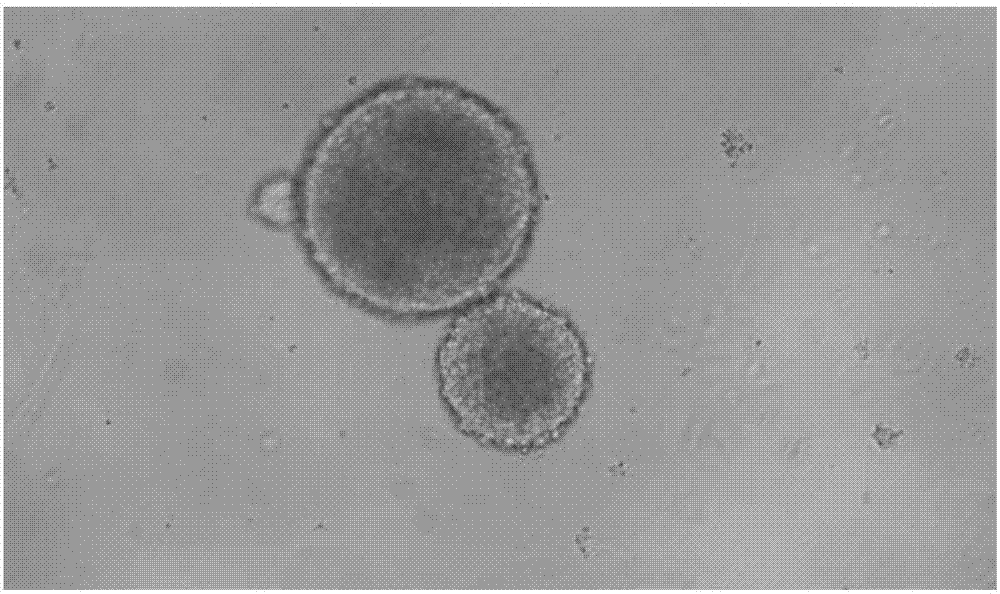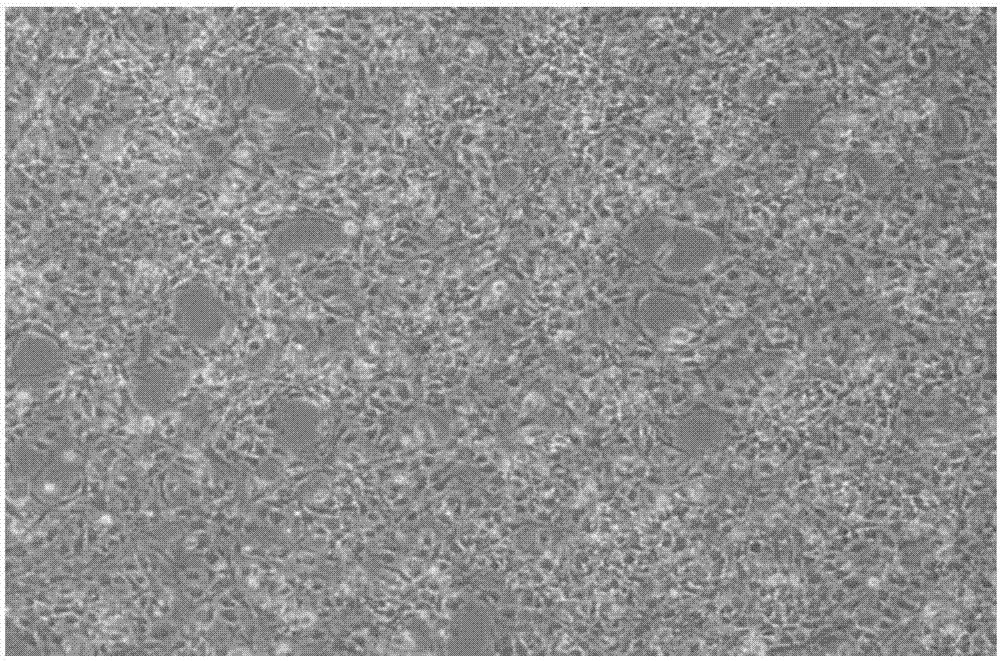Adherent culture method of neural stem cells
A neural stem cell and adherent culture technology, applied in the field of in vitro stem cell culture, can solve the problems of reduced self-renewal ability of neural stem cells, uncontrollable overall growth state, and inability to quantify the number of cells, etc., to achieve shortened digestion time, low price, and low cost Effect
- Summary
- Abstract
- Description
- Claims
- Application Information
AI Technical Summary
Problems solved by technology
Method used
Image
Examples
Embodiment 1
[0035] Example 1 Neural stem cell culture.
[0036] Prepare primary culture medium, containing 500 mL of DMEM / F-12 medium, basic fibroblast growth factor (basic FGF) 40 ng / mL, epidermal growth factor (EGF) 40 ng / mL, BIT 9500 50 mL, Heparin (Heparin) 5 μg / mL, L-glutamine 2 mM, Antibiotic-Antimycotic mixture (1:100) 5 mL.
[0037] Prepare subculture medium, containing DMEM / F-12 medium 500 mL, basic FGF 20 ng / mL, EGF 20 ng / mL, BIT9500 50 mL, L-glutamine 2 mM, Antibiotic-Antimycotic mixture (1:100) 5 mL .
[0038] (1) Add the forebrain tissue cells to the primary culture medium of neural stem cells preheated to 37°C, mix well and count the total cell number by trypan blue staining; press 3×10 6 Individuals / mL were inoculated into T75 culture flasks, the culture system in each flask was 15 mL, and 4 flasks were cultured in total; the culture flasks were placed at 37°C, 5% CO 2 cultured in an incubator.
[0039] After 36 hours of primary culture, the non-neural cells died, and...
Embodiment 2
[0042] Example 2 Identification of neural stem cells.
[0043] Take the neural stem cells passed to the 15th generation in Example 1, digest them with Accutase, and press 5×10 5 One piece / slice was seeded on a 14 mm diameter cell slide coated with poly-lysine, and adhered to the wall overnight for indirect immunofluorescence identification of neural stem cell markers (Nestin, SOX2).
[0044] The neural stem cell slides were collected and placed in a six-well plate, rinsed once with PBS balanced salt solution; fixed with 4% paraformaldehyde solution at room temperature for 20 min, and then aspirated off the fixative solution; then added 0.1% TritonX-100 solution, and incubated at room temperature for 10 minutes After 1 min, all the liquid was sucked off, and the slices were rinsed with PBS balanced salt solution 5 times, 5 min each time; the primary antibody Anti-humanNestin / Anti-human SOX2 was diluted with 5% donkey serum to a final concentration of 1:400; the diluted Antibod...
PUM
| Property | Measurement | Unit |
|---|---|---|
| diameter | aaaaa | aaaaa |
Abstract
Description
Claims
Application Information
 Login to View More
Login to View More - R&D
- Intellectual Property
- Life Sciences
- Materials
- Tech Scout
- Unparalleled Data Quality
- Higher Quality Content
- 60% Fewer Hallucinations
Browse by: Latest US Patents, China's latest patents, Technical Efficacy Thesaurus, Application Domain, Technology Topic, Popular Technical Reports.
© 2025 PatSnap. All rights reserved.Legal|Privacy policy|Modern Slavery Act Transparency Statement|Sitemap|About US| Contact US: help@patsnap.com



